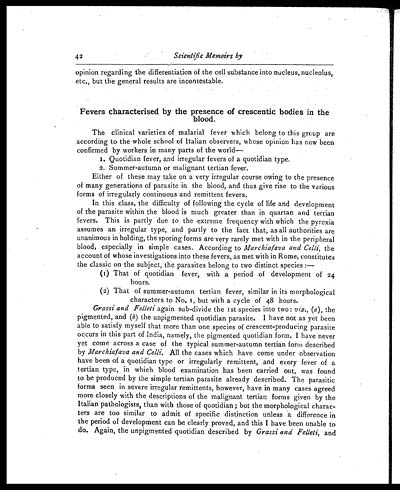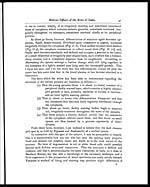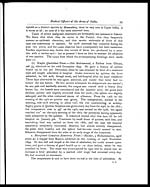Medicine - Institutions > Army health reports and medical documents > Scientific memoirs by medical officers of the Army of India > Part X, 1897 > 2 - Notes on the malarial parasite as observed in the blood during life, and in the tissues post-mortem, at Lahore, Punjab
(48) Page 42
Download files
Individual page:
Thumbnail gallery: Grid view | List view

42
Scientific Memoirs by
opinion regarding the differentiation of the cell substance into nucleus, nucleolus,
etc., but the general results are incontestable.
Fevers characterised by the presence of crescentic bodies in the
blood.
The clinical varieties of malarial fever which belong to this group are
according to the whole school of Italian observers, whose opinion has now been
confirmed by workers in many parts of the world—
1. Quotidian fever, and irregular fevers of a quotidian type.
2. Summer-autumn or malignant tertian fever.
Either of these may take on a very irregular course owing to the presence
of many generations of parasite in the blood, and thus give rise to the various
forms of irregularly continuous and remittent fevers.
In this class, the difficulty of following the cycle of life and development
of the parasite within the blood is much greater than in quartan and tertian
fevers. This is partly due to the extreme frequency with which the pyrexia
assumes an irregular type, and partly to the fact that, as all authorities are
unanimous in holding, the sporing forms are very rarely met with in the peripheral
blood, especially in simple cases. According to Marchiafava and Celli, the
account of whose investigations into these fevers, as met with in Rome, constitutes
the classic on the subject, the parasites belong to two distinct species:—
(1) That of quotidian fever, with a period of development of 24
hours.
(2) That of summer-autumn tertian fever, similar in its morphological
characters to No. 1, but with a cycle of 48 hours.
Grassi and Felleti again sub-divide the 1st species into two: viz., (a ), the
pigmented, and (b ) the unpigmented quotidian parasite. I have not as yet been
able to satisfy myself that more than one species of crescent-producing parasite
occurs in this part of India, namely, the pigmented quotidian form. I have never
yet come across a case of the typical summer-autumn tertian form described
by Marchiafava and Celli. All the cases which have come under observation
have been of a quotidian type or irregularly remittent, and every fever of a
tertian type, in which blood examination has been carried out, was found
to be produced by the simple tertian parasite already described. The parasitic
forms seen in severe irregular remittents, however, have in many cases agreed
more closely with the descriptions of the malignant tertian forms given by the
Italian pathologists, than with those of quotidian; but the morphological charac-
ters are too similar to admit of specific distinction unless a difference in
the period of development can be clearly proved, and this I have been unable to
do. Again, the unpigmented quotidian described by Grassi and Felleti, and
Set display mode to: Large image | Zoom image | Transcription
Images and transcriptions on this page, including medium image downloads, may be used under the Creative Commons Attribution 4.0 International Licence unless otherwise stated. ![]()
| Permanent URL | https://digital.nls.uk/75003186 |
|---|
| Shelfmark | IP/QB.10 |
|---|---|
| Additional NLS resources: | |




